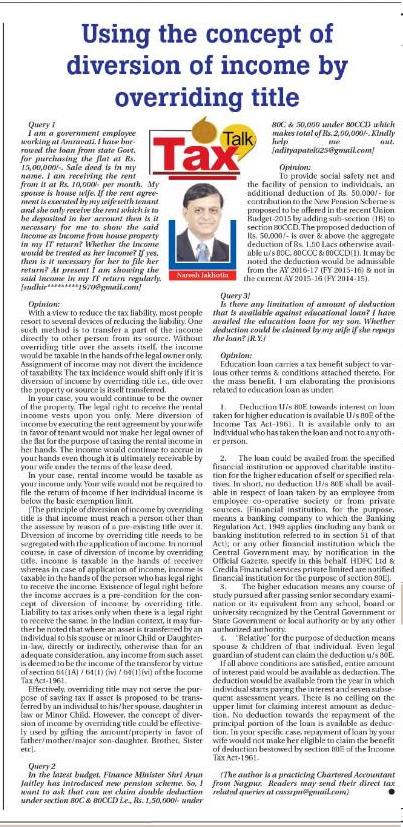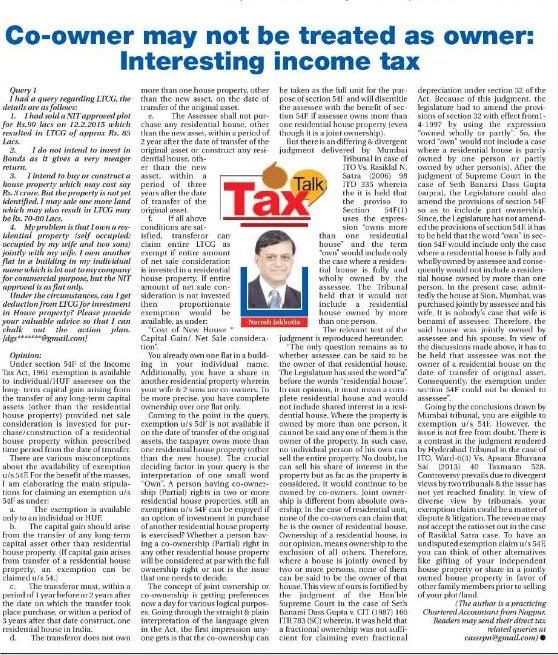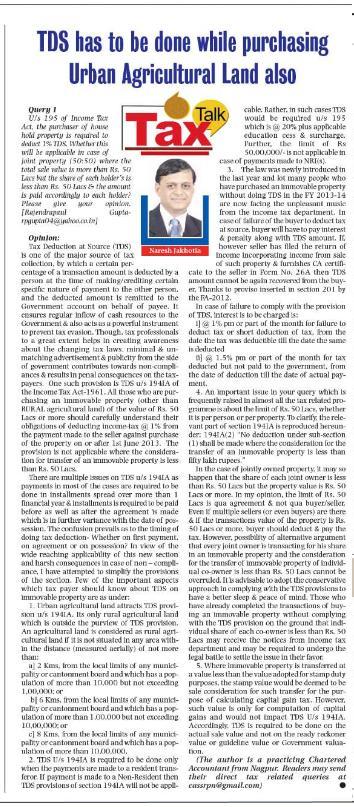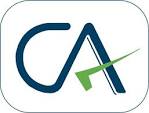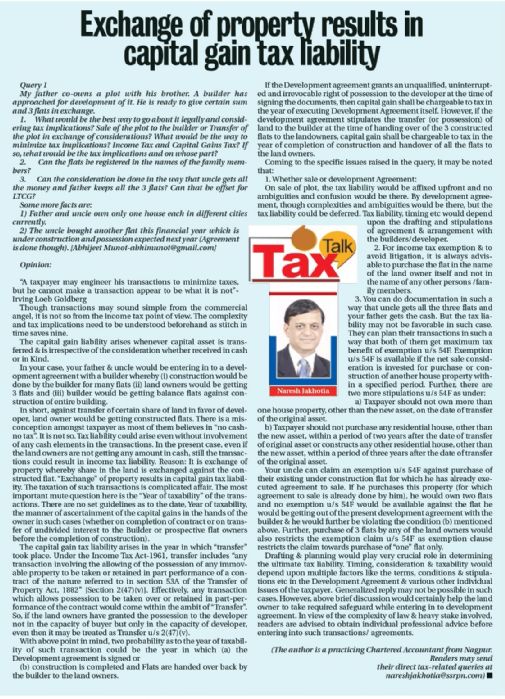Article Details
| Reduce the tax liability on arrears of salary by claiming relief u/s 89 |
|
TAX TALK-29.02.2016-THE HITAVADA TAX TALK CA. NARESH JAKHOTIA Chartered AccountantReduce the tax liability on arrears of salary by claiming relief u/s 89 Query 1] I am working in a PSU & our wage revision has been done on December-2015. I have received arrears for the last 3 years. Now my questions are:
Issue related to taxability of “Arrear of salary” is again in the limelight as a result of retrospective revision of the pay scale for various spectrum of employee. Along with the bonanza, emerges the question of its taxability. Arrears of salary, even if it may be pertaining to earlier years, shall be taxable as the income of the year in which it is received. Whenever arrear of salary is received in any particular year, the tax liability for that year increases simply because of the rise in the aggregate income in that particular year. However, Income tax law has taken care of the hardship that may be caused to the taxpayer by providing relief under section 89(1) of the Income Tax Act-1961. What is relief u/s 89(1)? The objective of section 89(1) read with Rule 21A(2) is to mitigate hardship caused because of high incidence of tax due to progressively increasing slab rates. The benefit under this is available to every taxpayer who gets salary in advance or in arrears irrespective of being a government employee or private sector employee. In simple words, taxpayers are compensated against higher tax rate because of delay in payment. In simple words, taxpayers are saved from paying more tax because of delay in the payment of the salary. Mode of computing relief u/s 89(1)? Relief u/s 89(1) would almost nullify excessive tax impact arising as a result of clubbing of earlier years salary income with the current years income. The mode of computing relief u/s 89 is merely an arithmetical calculation & not that complicated as is perceived by the taxpayers. The relief can be calculated by adhering to the point-wise steps, mentioned below: 1. Calculate the tax payable on the total income, including the arrears of salary, of the relevant previous year in which the same is received. 2. Calculate the tax payable on the total income, excluding the arrears of salary, of the relevant previous year in which the additional salary is received. 3. Find out the difference between the tax at (1) and (2). 4. Compute the tax on the total income after including the arrears of salary in the previous year to which such salary relates. 5. Compute the tax on the total income after excluding the arrears of salary in the previous year to which such salary relates. 6. Find out the difference between tax at (4) and (5). 7. The excess of tax computed at (3) over tax computed at (6) is the amount of relief admissible under section 89. No relief is admissible if tax computed at (3) is less than tax computed at (6). If the arrears of salary relates to more than one previous year, salary would be spread over the previous years to which it pertain in the manner explained above. 8. The required particular for relief u/s 89 is required to be worked out in Form No. 10E. How to claim relief u/s 89(1): The income tax department has made it mandatory to file Form 10E if taxpayer wishes to claim relief under section 89(1). It is compulsory to upload online 10E form w.e.f. Assessment Year 2015-16, else claim will be rejected. Taxpayers would be receiving the notices in case relief u/s 89(1) is claimed without uploading Form No. 10E. [All taxpayers who had already claimed relief u/s 89(1) in the A.Y. 2015-16 without uploading 10E are informed by the department through intimation order u/s 143(1) that their claim u/s 89(1) is rejected and accordingly demand is raised on them]. How to file Form No. 10E online:Form No. 10E can be filled online from Income Tax website by taking following sequential steps:1. Login to Income Tax e-filing portal at www.incometaxindiaefiling.gov.in.2. After logging in, click on tab named ‘e-File’ and select ‘Prepare & Submit Online Form (Other than ITR) 3. On the next screen, select Form 10E and the Assessment Year from the drop down options. 4. The Form 10E would be displayed with instructions and annexure. Fill the relevant details and submit. In your case:
Query 2] I am working in LIC. Our wage settlement is done in the month of Jan-2016 and Basic pay & allowances are revised accordingly. We also got the arrears payment from Aug-2012 to Dec-2015. My basic pay in pre-revised salary was Rs. 26,480/- and HRA paid @7% from April-2015 to Dec-2015. HRA on new basic of Rs. 50,505/- is Rs. 3,535/- w.e.f. Jan-2016. My query is whether arrears paid to me as difference of HRA from April-2015 to Dec-2015 will be added while deciding HRA relief or actual HRA paid @ old rate from April-2015 to Dec-2015 will be taken in account? My monthly rent is Rs. 6,000/- p.m. Please clarify. [nitin.malvi@licindia.com]
[The author is a practicing Chartered Accountant from Nagpur. Readers may send their direct tax related queries at SSRPN & Co 10, Laxmi Vyankatesh Apartment C.A. Road, Telephone Exch. Square Nagpur-440008 or email it at nareshjakhotia@ssrpn.com]. |
 |




.png)
